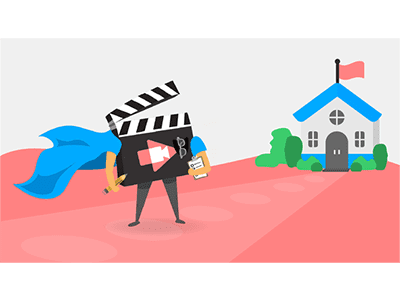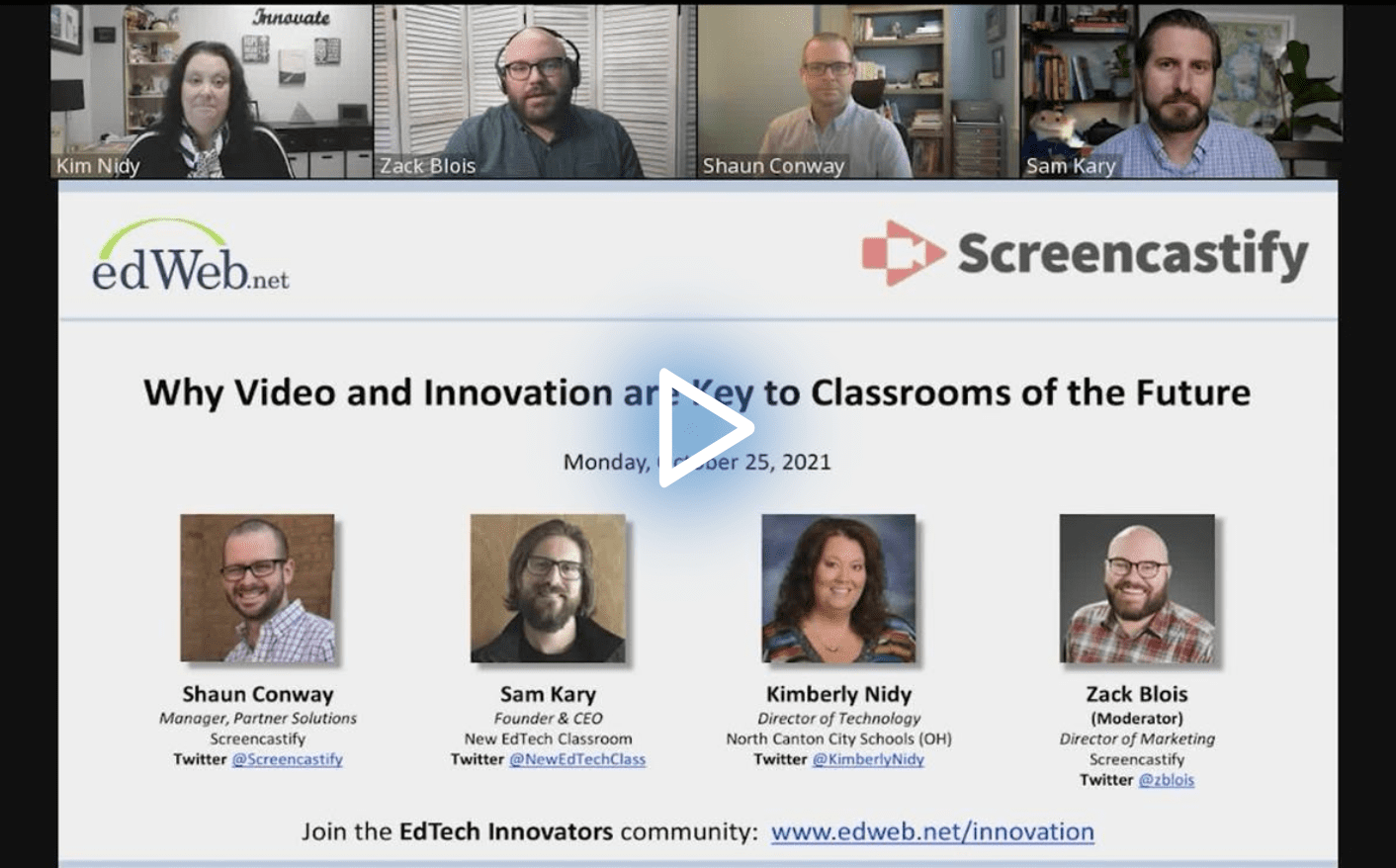How Video Innovation Expands Teaching and Learning
Blog post by Michele Israel based on this edLeader Panel
During the pandemic, school communities flexed resiliency, creativity, collaboration and flexibility to adapt to unforeseen challenges quickly. Video emerged as a crucial, game-changing tool in this adaptation, enabling K-12 teachers to provide students with the best possible learning environments despite the crisis.
With teachers and students returning to the classroom, video technology tops the list of tools that will continue to bolster instruction and learning. In the recent edLeader Panel, sponsored by Screencastify, educators and tech specialists described how video is an avenue for educational innovation now and moving forward.
The Many Benefits of Video
Video technology offers multi-faceted value to teachers and learners. First, it moves away from traditional teacher-centered instruction. It invites students to learn independently and asynchronously at their pace while giving teachers the time to work with students in small groups or individually.
Sam Kary, the founder of New EdTech Classroom, sees video as an avenue through which teachers gain greater access to learning experiences. In addition, parents have more access to teachers and students who get to hear their teachers’ voices in different formats.
Video also eliminates the mundanity of standard instructional and learning tools, like a spreadsheet or worksheet, emphasized Kimberly Nidy, Director of Technology for North Canton City Schools (OH).
There’s lots of evidence supporting Kary’s and Nidy’s views—video usage benefitted stakeholders across school communities during the pandemic. The following highlights a few impact areas:
Teaching and Learning
- Videos are ideal for flipped learning, which exploded during the pandemic. Students can independently watch a video lesson and discuss it with the teacher when in the classroom to further their understanding.
- With video, teachers can offer students feedback on assignments more readily. And students, in turn, can share video or audio responses to feedback received. It beats the more traditional written markup of a physical student paper.
- Across the curriculum, students can use video to demonstrate skills, from their ability on a band instrument to sign language. They can rerecord assignments until they are satisfied with their work and ready to share with their teachers (who can record or share virtual feedback in real time). The technology provides a safe learning environment for students where they can express themselves and share outcomes.
Teacher Support and Professional Development
- Educational leaders create explainer videos that help teachers navigate new technology. For example, Nidy produced how-to videos to help educators use Schoology for setting up quizzes, assignments, etc.
Communication and Parent Engagement
- Video technology enhanced and streamlined communication with parents. For example, principals shared school and community video updates with parents, and more parents participated in parent-teacher conferences because they were online. The richer communication gives parents a bird’s-eye view and a deeper grasp of what teachers and other school staff do to support students.
Future with Video
Video technology has encouraged educators to expand their roles in greater authentic, communicative and collaborative learning. The possibilities are inspiring and include:
- Building student engagement through “real-world,” video-based projects.
- Strengthening and further developing students’ technology and video skills to better prepare them for the 22nd-century workforce (likely to be largely remote).
- Providing greater educational flexibility and accessibility to support parents and students where they’re at.
- Stretching video capacity in educational environments that will not fully be in a physical classroom and further amplifying and replicating teachers’ voices in that regard.
- Facilitating greater teacher collaboration and content sharing to personalize instruction and reduce the workload, while opening up availability to reach students.
- Using video more (and other technology, like AI) to support students with learning disabilities.
Shaun Conway, Manager of Partner Solutions at Screencastify, emphasized while school districts are at very different places in terms of technology adoption, capability and evolution, there is opportunity for them to keep evolving, trying new things and innovating from their experience with video to ensure students can access learning.
This edWeb broadcast was sponsored by Screencastify — the world’s leading video creation software for the education industry.
Watch the Recording Listen to the Podcast
About the Presenters
Prior to joining Screencastify, Shaun Conway was a classroom teacher and building administrator for more than 10 years. During his time in education, Shaun worked to expand blended learning strategies and 1:1 initiatives, while always focusing on meeting teachers and students where they are. Shaun is a Golden Apple Scholar and Distinguished Alumni from Illinois State University’s Department of History.
Sam Kary is the founder of New EdTech Classroom, a startup dedicated to teaching educators how to design innovative classrooms with technology. Sam is a former classroom teacher and instructional coach of a decade who spent his early career skeptical of technology’s role in education. Now, he works full time helping teachers learn how to use technology to design interactive, engaging, authentic learning experiences that cultivate 21st century skill development in the 4 Cs through his YouTube channel, online courses, and workshops. Sam is an ISTE Certified Educator, National Geographic Certified Educator, and Google Certified Trainer, and his work has been featured in Forbes for supporting teachers during emergency distance learning. Follow him on Twitter @newedtechclass, and take his free Teaching with Technology Starter Kit course at newedtechclassroom.com/starterkit.
After teaching business and technology courses for 20 years, Kimberly Nidy left the classroom and has served at the district level as an Innovation Specialist, Director of Instruction, and now Director of Technology. These roles have allowed her to work in the areas of defining and implementing innovative initiatives that support teaching and learning.
About the Moderator
Zack Blois is the Director of Marketing at Screencastify and is a former high school teacher and informal educator. After his time teaching, he spent the last 10+ years driving strategy, learning, and building teams at EdTech and general software companies.
Join the Community
EdTech Innovators is a free professional learning community on edWeb.net that presents edWebinars with educators who are exceptional in their use of technology to support teaching and learning.
Screencastify is the world’s leading video creation software for the education industry. It allows anyone to capture, edit and share screen videos. Over 5 million teachers and students around the world use Screencastify to flip classrooms, build student portfolios, capture student voice, and create personalized assignments.





Comments are closed.